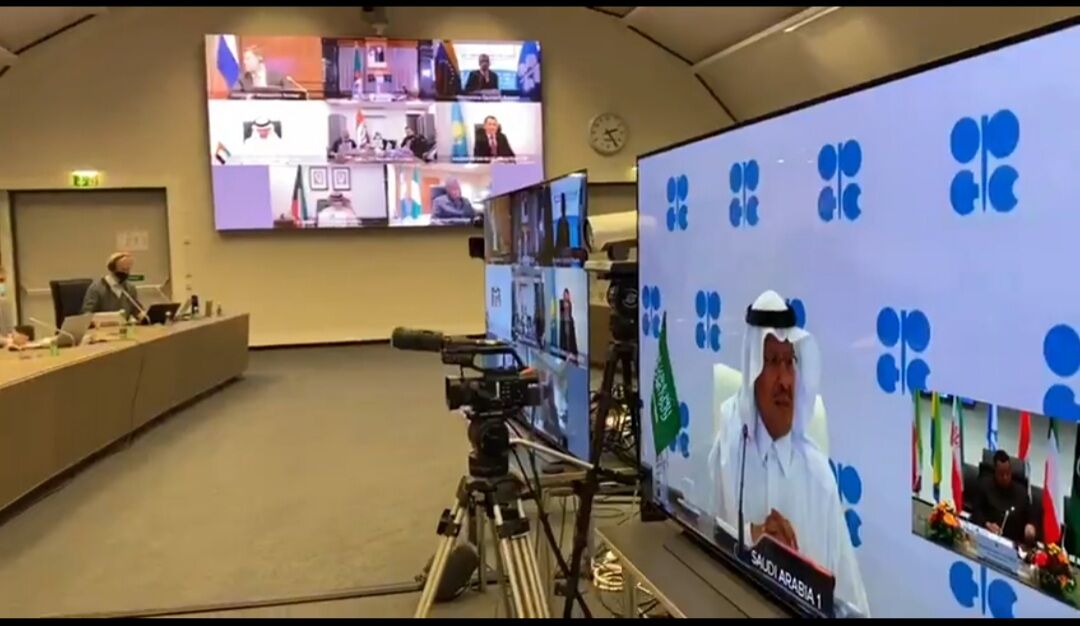You may ask, why they did sign an agreement to oppose. Honestly, there is no clear answer to this question and undoubtedly the signatories of the deal may provide better answers to it; however, to know the difference between 11 million barrels for production baseline and October 2018 baseline for Russia and Saudi Arabia, continue reading.
Saudi Arabia
Saudi Arabia should be considered one of the most committed OPEC members based on its production of 11 million barrels of crude oil. According to the latest report of the Joint Ministerial Monitoring Committee (JMMC), OPEC+ was 102% compliant to the production adjustments and has never been less than 100% committed since the beginning of adjustments (May to October). In support of the agreement, Saudi Arabia's Minister of Energy Prince Abdulaziz bin Salman has repeatedly pounced on countries that had failed to adhere to the adjustments, including the United Arab Emirates, which violated the agreement in July and August.
If you recall, the Saudi Energy Minister, to show his seriousness in implementing the production adjustment agreement, went so far as to put UAE Energy Minister Suhail al-Mazrouei next to him, in a dramatic move at the OPEC+ virtual meeting in September, to send the message that failure to implement the adjustments could not be overlooked.
Now, let’s look more closely at Saudi Arabia itself just like other OPEC+ countries based for its crude oil output in October 2018. On this basis, Saudi Arabia is no longer the good student of the production adjustment class. Saudi Arabia's production in October 2018 was on average 10.633 million bpd, while according to the agreement, its daily production should have been reduced to 8.125 million bpd in the first three months after the agreement, and then in the second step, bring its output to 8.626 million bpd. By that figure, Saudi Arabia's average commitment from May to October was just a little over 90%. This means that if the crude oil production baseline for Saudi Arabia, like other countries except Russia, had been calculated in October 2018, this country would have already produced a little over one million more than its commitment.
Russia
Russia's baseline, which, like that of Saudi Arabia, was set at 11 million bpd at the April summit, is not very bright. The country's total compliance never reached 100% from May to October. Moscow’s total compliance since implementation of the production adjustment deal from May to October has been 96% on average. In other words, Russia has produced 530,000 more barrels of crude oil based on the 11 million barrels baseline.
Consider Russia based on crude oil production in October 2018. The country's crude oil output in October 2018 was an average of 10.643 million bpd. In other words, this country should have produced 8.135 million bpd in May and June, and then in the second step, 8.836 million bpd. In fact, Russia's commitment by considering the October 2018 baseline was about 80%, and with this scenario, it has violated the agreement by more than 2.5 million barrels, which is more than all of OPEC members.
But...
The UAE and Nigeria from OPEC and Kazakhstan from non-OPEC countries have called for an increase in the crude oil production baseline like Saudi Arabia and Russia. These countries want to rid themselves of the pressure to compensate for overproduction.
The UAE whose proposal was rejected by Saudi Arabia to increase quotas after violating the adjustments in July and August, does not want to be rejected again, and Saudi Arabia does not want to fall short; an issue that could become a bone of contention between two Arab allies in OPEC.
Sources say the Saudi Energy Minister resigned from co-chairmanship of the OPEC+ Ministerial Conference at the 180th OPEC meeting on November 30 which complicated the situation. In addition, there is a country like Iraq that, despite the most violations and 610,000 barrels of compensatory production from May to October, has agreed to further reduce production in the 1Q21. However, we still have to wait, the situation is difficult and, according to Iranian Minister of Petroleum Bijan Zangeneh, negotiations and patience are needed. I hope history does not repeat itself for OPEC+ in less than a year. Many still do not forget the events of March and the price war between Russia and Saudi Arabia and the negative price for WTI crude oil in April 2020. The global economy is now too fragile to withstand another oil war.
By Roya Khaleghi
Translated by Abbas Hajihashemi


Your Comment